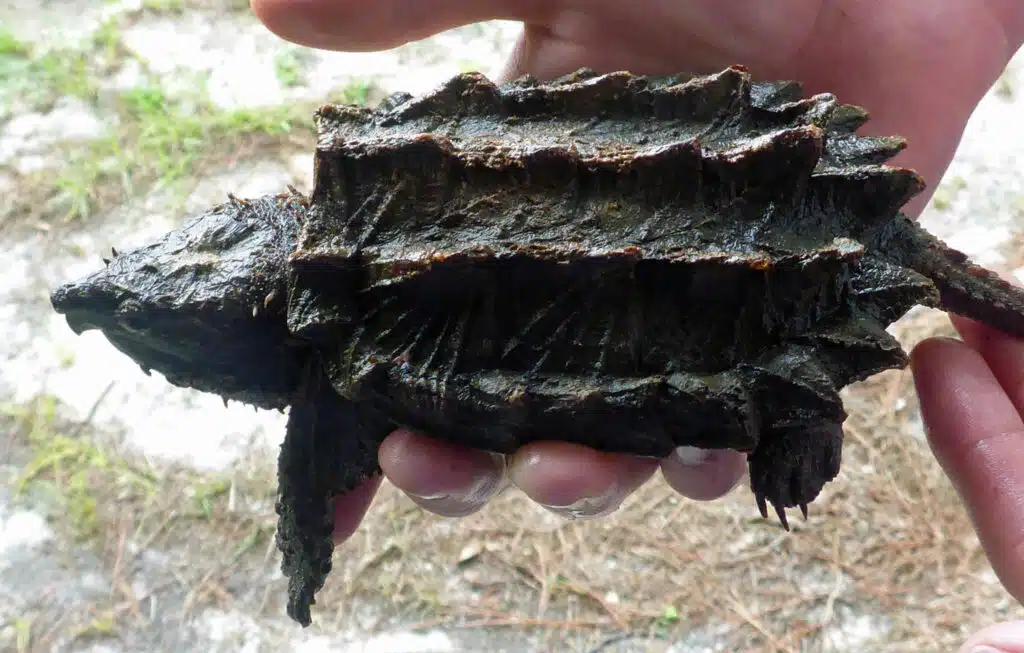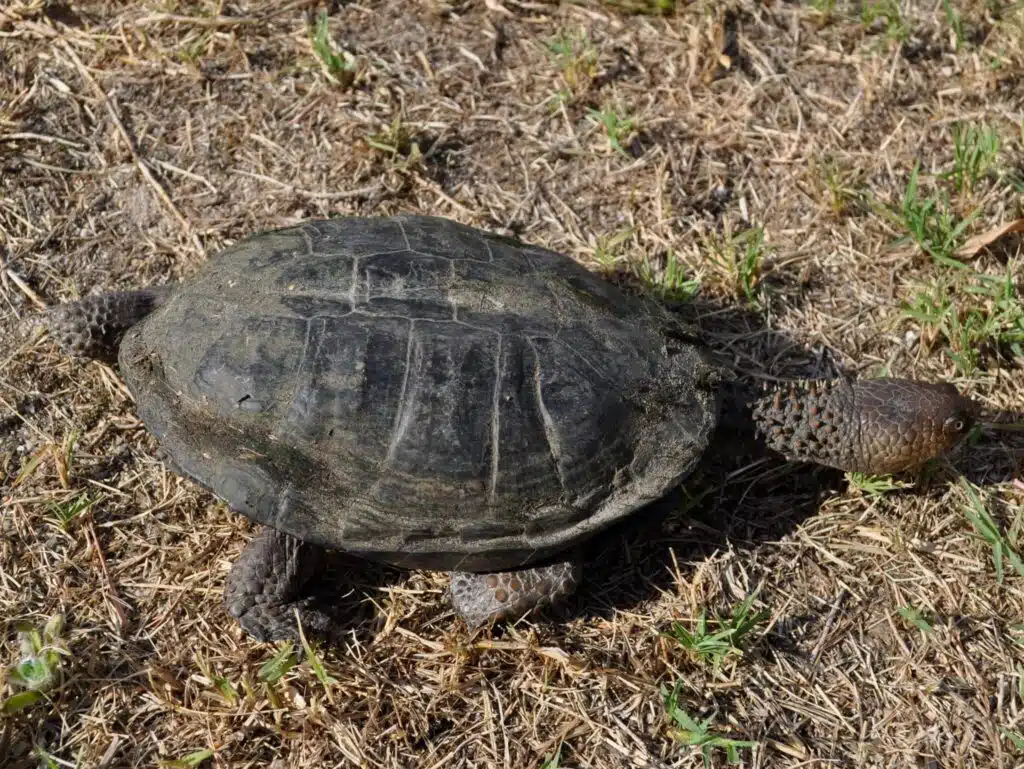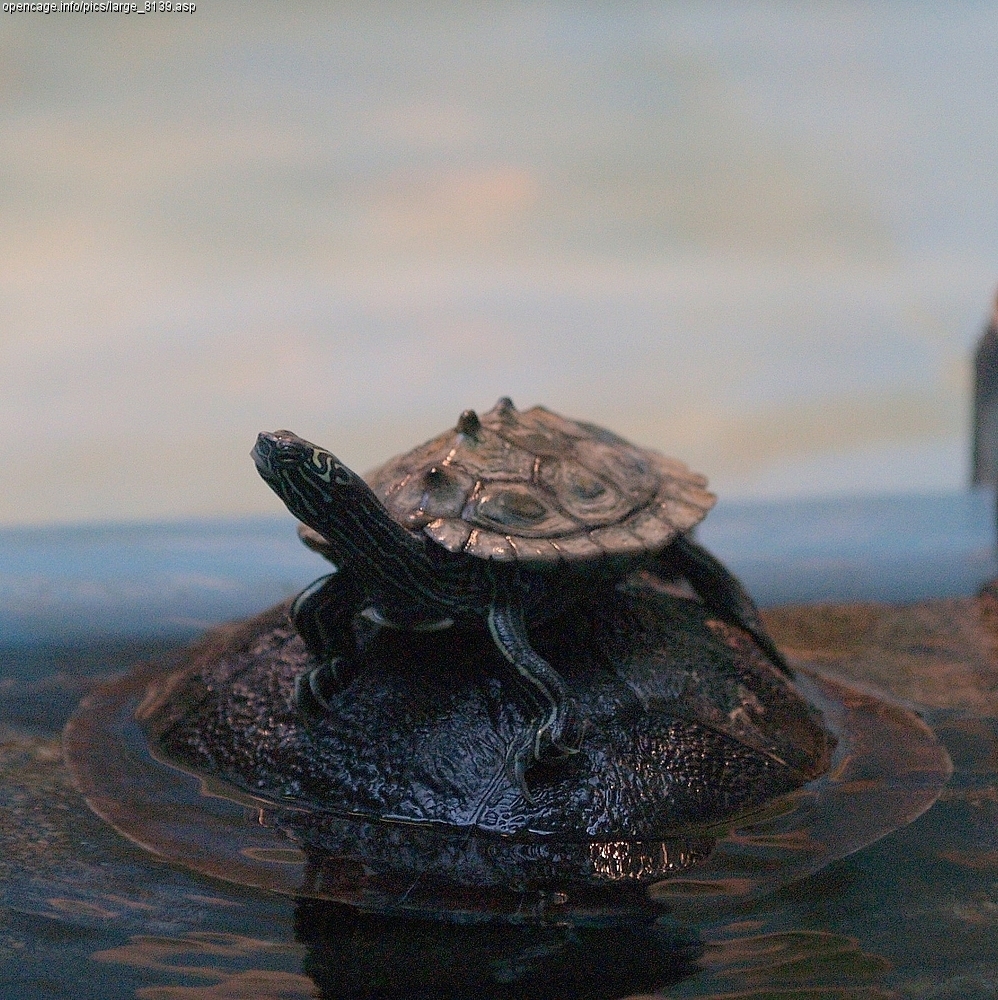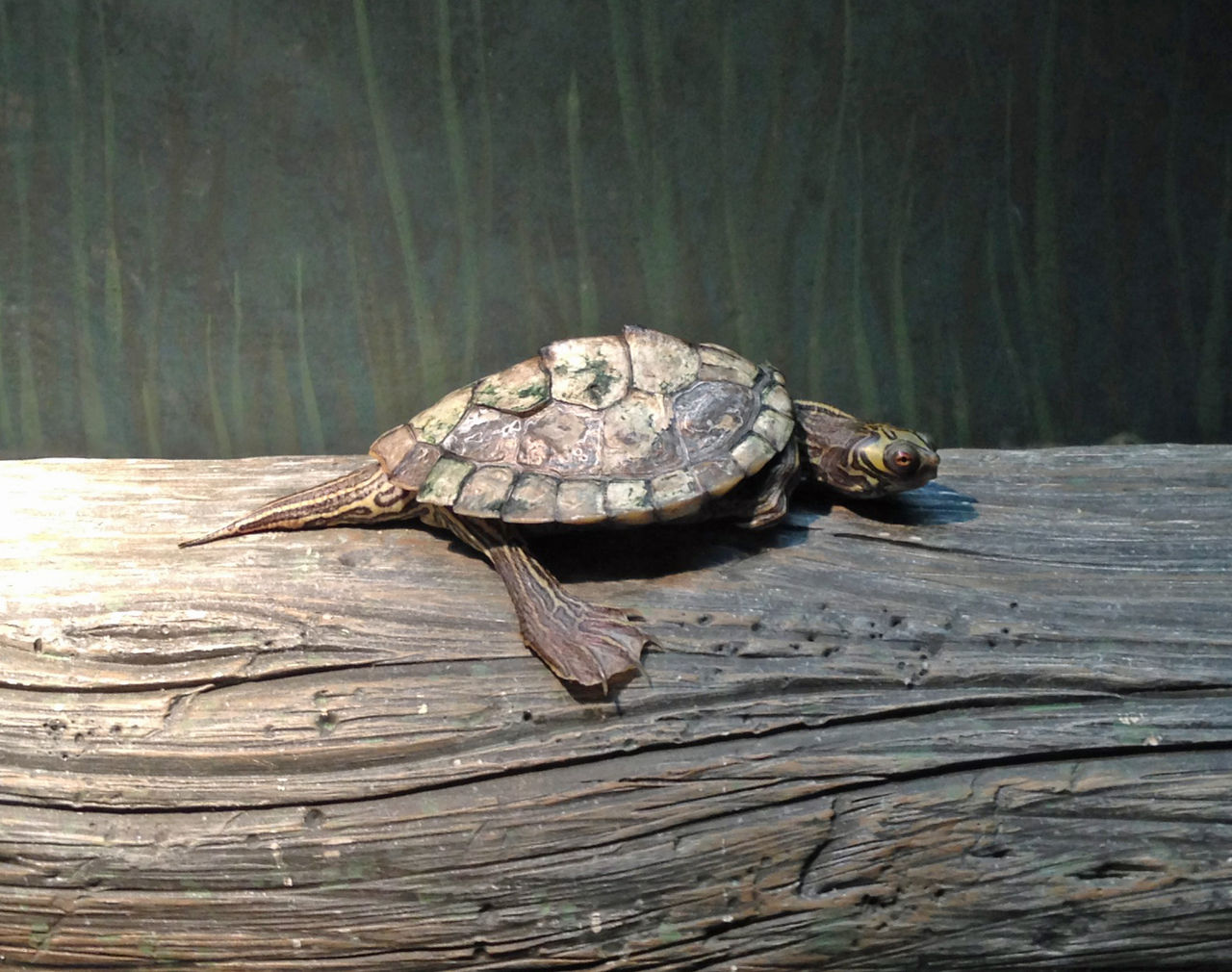Turtles live across The Americas, including in The United States. Most may be known for their smooth carapace but some have spikes.
Turtles can have spikes on their carapace or on their necks. Both variants are still visible in the wilderness today.
Protected in The United States, turtles have spikes as a means of defense. These spikes can be rounded and dull out with age or they can be pointy.
Some of the following turtles even have fin-like spikes and rows of multiple spikes.
Table of Contents
1. Alligator Snapping Turtle
One of the largest types of turtles in North America, Alligator Snapping Turtles (Macrochelys temminckii) are known for their freshwater habitat and spiny appearance.

This is a species that is commonly confused or associated with The Common Snapping Turtle.
However, its dark carapace is known for its spines which make it look distinct. With an almost prehistoric look, this is a species that shows multiple rows of spines.
Their spikes and the carapace may often have a bright green appearance. This is not their natural color as these turtles may pick up the algae in water.
The appearance of the species has even led to it being compared to dinosaurs. Spiny dinosaurs such as armored dinosaurs may bear some resemblance with the species.
Alligator Snapping Turtles may eat anything they find, but they prefer a carnivorous diet.
They will eat almost anything they can find, both living and dead. These turtles have no problem feeding on carcasses.
Types of spikes – rows of spikes
2. Spiny Terrapin

A species of Brunei and Indonesia, Spiny Terrapin (Heosemys spinosa) is one of the smaller turtles with spikes in the world.
This is a species with a changing carapace and carapace color, as it ages.
After laying 1-2 eggs 2-3 times per year, the female allows young spiny turtles to emerge.
Only the young Spiny Terrapin have actual spikes, as their carapace smoothens out over time.
This is a type of evolutionary adaptation as the spines of the juvenile have a protective role. They guard the species against predators in a period they are most likely to be attacked and preyed upon.
A small turtle, The Spiny Terrapin has often been associated with plant-eating turtles. However, these turtles may also feed on other types of food such as animals, insects, and carrion.
Types of spikes – circular spikes around the carapace
3. Suwannee Alligator Snapping Turtle

This type of turtle is part of The Macrochelys, a species of the Southeastern and Midwestern US territories.
A freshwater type of turtle Suwannee Alligator Snapping Turtle (Macrochelys suwanniensis) is part of the same freshwater turtle family of Alligator Snapping Turtles.
As their name implies, they are only found around The Suwannee River. This is a river that flows from Georgia to Florida.
Its carapace is dark brown and shows distinguishing rows of spikes. These spikes are also dark brown and don’t have any differentiating patterns.
3 rows of short spikes are specific to this dinosaur-looking freshwater turtle.
While its populations are stable, its believed humans remain the biggest concern to the species as many are collected from their natural habitat.
Types of spikes – 3 rows of short spikes
4. Black Spine-necked Swamp Turtle

There’s almost no type of turtle just like The Black Spine-necked Swamp Turtle (Acanthochelys spixii). This is a species with spines on its neck.
These spines are seen along its elongated neck, running from the back of its head to the carapace.
Tens of short earth-colored short spines are seen on the back of its neck, arguably acting as a last line of defense against all types of faster predators.
A gray-olive color is specific to these spines and the neck of the turtle.
These spines only grow on its neck once it starts to mature as the more colorful young turtle of the species doesn’t have a spiny neck.
Types of spikes – rows of short spikes.
5. Black-knobbed Map Turtle

Named after the appearance of its spikes, this turtle is among the species with visible spikes on the carapace of adults.
These spikes are rare in appearance, on the other hand. They have a black color, unlike the olive-gray color of the carapace.
These spikes aren’t as sharp as on other turtles. Their round shape may change in time, on the other hand.
Black spikes on female Black-knobbed Map Turtles (Graptemys nigrinoda) flatten out over time.
Types of spikes – 1 row of round head black spikes
6. Barbour’s Map Turtle

Native to the Southeastern US territories, Barbour’s Map Turtle (Graptemys barbouri) lives in Georgia, Florida, and Alabama.
Numerous and various size spikes are specific to this turtle.
3 main rows of spikes are seen along its carapace. There are one central row and 2 laterals rows running along the carapace margins.
Its largest spikes are specific to the mid-carapace. It’s in this row that the spikes take on the shape of fins.
A small turtle growing to a size of just a few inches, the species feeds on small fish and mollusks.
Types of spikes – fin-like spikes
7. Escambia Map Turtle
A long-living species, Escambia Map Turtles (Graptemys ernsti) are native to The Southeastern United States.
They are named after their Escambia Bay habitat in Western Florida.
Escambia Map Turtles are among the species with larger females. The female measures more than 10 inches, almost double that of the larger male.
They show spikes on the back in the form of fins on the mid-dorsum. There’s even one spike that looks like a fin, mid-way down its carapace.
This species spends a lot of time in the water, which may explain its spiky-carapace adaptation.
It takes time for these spikes to grow on their carapace. Juveniles don’t have them while males tend to show them sooner compared to females which also take longer to become ready to breed.
It’s here that it feeds on various aquatic organisms, including those that are invasive in the area.
Escambia Map Turtles help control invasive freshwater clams in the area.
Types of spikes – 1-row spikes